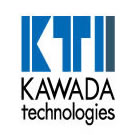The Ecotic Challenges:
Will there ever be a world without AI and robots again?
Are robots and AI the new plague?
Dominique Lestel (ENS, Paris)
Gentiane Venture (UT, Tokyo & AIST, Tsukuba)
Autonomous robotics is part of a rather restricted class of “total phenomena” that are capable of transforming in depth all the dimensions of an epoch. Every two years Ecotic regoups in an informal manner, expert and persons interested in this total phenomenon for transformative discussions.
Ecotic 1 2018 "Who's there? Ecology of the presence of robots and inhabited artifacts"
For most people, meeting an autonomous robot is first of all being confronted with a presence. In the case of a human, this effect of presence is normally explained by the hypothesis that the body is inhabited by a more or less abstract principle that has long been called "soul" and that is more readily called today "consciousness", whose supposed biological nature remains as mysterious as that of the soul. A number of artifacts also have ambiguous qualities of presence that bring them closer to humans, such as certain dolls, certain puppets, certain fetishes – and today a growing number of robots. Attributing them a soul is very attractive but is not very up to date. Searching for a consciousness there, in the contemporary sense of the term, quickly leads to insurmountable difficulties for artifacts devoid of any biological dimension. Another path leads to being interested less in the causes than in their effects and in wondering why we have the impression that certain artefacts show effects of presence. How can we think of an ecology of presence in technological contexts that makes it possible to account for the complexity of the phenomena at stake? Is there continuity between the effects of presence with robots and with more traditional artefacts such as dolls or fetishes?
Ecotic 2 2020 "Pathetic machines"
The gommy-gluey-slimmy objects are objects that people attach to and attach to people. The objects that force their ways to settle down in people lives, in places they live or in places they work. Liquid intelligence is that which flows through troubles, that which prefers avoiding obstacles rather than tackle them up front. Liquid intelligence avoids showdown and prefers dissolution, fleeing away, or networking. Paradoxically, gommy-gluey-slimmy objects and liquid intelligence fit with each others remarkably. Smartphone is the perfect comtemporary example of such objects, but it is far from being the only one. A certain kind of robotics has resolutely chosen that path. More "companion robotics", rather than "social robotics". It would yet be quite a shortcut to consider that these objects or artifacts are a specifity of our time. These objects have certainly existed synchronously to humanity. Artifacts that were rapidely classified as religious or superstitious by archeologists. The connection with the relationship with stuffed animals is a fertile example of such bonds with objects that shake down simplistic explanations.
Ecotic 3 2022 "Pathetic machines"Who's there? Ecology of the presence of robots and inhabited artifacts"
For most people, meeting an autonomous robot is first of all being confronted with a presence. In the case of a human, this effect of presence is normally explained by the hypothesis that the body is inhabited by a more or less abstract principle that has long been called "soul" and that is more readily called today "consciousness", whose supposed biological nature remains as mysterious as that of the soul. A number of artifacts also have ambiguous qualities of presence that bring them closer to humans, such as certain dolls, certain puppets, certain fetishes – and today a growing number of robots. Attributing them a soul is very attractive but is not very up to date. Searching for a consciousness there, in the contemporary sense of the term, quickly leads to insurmountable difficulties for artifacts devoid of any biological dimension. Another path leads to being interested less in the causes than in their effects and in wondering why we have the impression that certain artefacts show effects of presence. How can we think of an ecology of presence in technological contexts that makes it possible to account for the complexity of the phenomena at stake? Is there continuity between the effects of presence with robots and with more traditional artefacts such as dolls or fetishes?
Ecotic 4 2024 "Sensational futures: senses, robots and AI"
With Ecotic 4 invites you to embark on a journey that explores the cutting-edge intersection of sensory perception, robotics, and artificial intelligence. It bring together experts, enthusiasts, and visionaries from diverse fields to engage in a dynamic dialogue about the incredible potential of robots and AI to enhance, mimic, and extend our human senses. Ecotic 4 is a unique opportunity to be part of a transformative discussion that promises to shape the future of technology and humanity. Join us as we uncover the limitless potential of this emerging frontier, where the realms of science fiction become the foundation for our sensational future.
As usual, the aim of this fourth "ecotic" workshop is to gather philosophers, engineers, anthropologists, designers, artists and decision makers to think together technological objects that fall obviously outside of the conventional frameworks used to study artifacts and technology.

